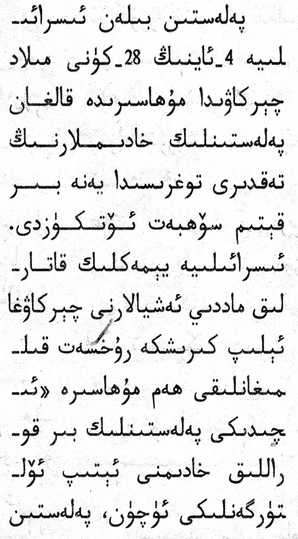If this script runs right-to-left, are there any issues when handling that? Is bidirectional text adequately supported? What about numbers and expressions? Do the Unicode bidi controls and HTML markup provide the support needed? Is isolation of directional runs problematic? See available information or check for currently needed data.
GitHub issue #256
This issue is applicable to all languages with RTL orthographies.
Style sheets need to add special rules for RTL styles if they are not supported by logical properties or values.
One approach is to create a second style sheet which, when pulled into an HTML page, overrides styles in the main style sheet with settings for RTL text. This approach is not ideal because it requires maintaining the styles in two separate locations, which can therefore get out of synch, and it requires explicit addition of a call to the second style sheet in every page that will support RTL text.
The :dir() pseudo-class avoids these issues by allowing the content author to include the RTL variations in the same style sheet as the others. However, it is not yet supported by all major browser engines.
A workaround that precedes selectors with :root[dir=rtl] selector_here can help, but :dir() is a better way forward. There also appear to be Shadow DOM implications if this is not supported.
Specs:
selectors-4 Describes the :dir() feature in CSS.
html5 Describes the :dir() feature in HTML.
Tests & results:
Can I Use indicates that Gecko supports :dir(), but Blink, and Webkit do not.
The functionality appears to be available in Blink, but behind a flag.
Browser bug reports:
Blink • Webkit
Priority:
This pseudo-class significantly improves the process of designing style sheets that can cater for both LTR and RTL pages. It is a valuable enabler for better internationalisation of the Web for the billion or so potential users of RTL scripts.
GitHub issue #244
This issue is applicable to all languages using a right-to-left script.
For support of bidirectional plain text, the Unicode Standard provides a number of formatting characters, which include RLI, LRI, PDI and FSI. See an explanation of how these work.
Although markup should be used most of the time in HTML pages, there are parts of an HTML document that don't support markup, such as the title element and title, alt, and other attributes. These characters can be necessary for managing inline runs of such text.
For more details, see this GitHub issue, which is being used to track this gap.
GitHub issue #217
This issue is common to all RTL scripts.
Adoption of logical keywords such as -start and -end, rather than -left and -right needs to be completed.
For margins, padding, block size, border colour, width & style, logical keywords such as margin-inline-start or margin-block-end are widely supported by major browsers in their simplest forms (such as those just mentioned). However, logical properties are not well supported in shorthands such as margin-block or margin-inline or the margin property. The lack of support for shorthands is significant, since they are expected to have high use.
Support for the margin shorthand is currently held up by a discussion about the appropriate syntax. See this CSS issue.
Other logical properties that are not widely supported include border radius, caption side, and float. Firefox does support border-radius and floats, but otherwise these are not supported.
See a set of test results.
These new values also need to be widely supported in editing applications.





